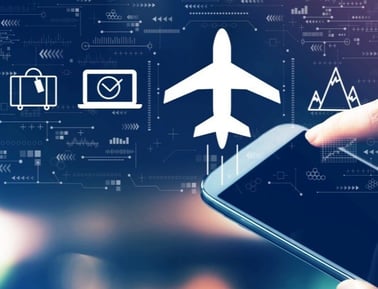Innovations that once seemed to belong to the realm of fantasy are now close to becoming a reality. State-of-the-art technologies are helping airports fulfill the complex and changing needs of passengers and ensure cost-effective and efficient operations. The primary reason airports across the globe are adopting new-age digital technologies and communicating via mobile and the Internet is to enhance passenger experience at various touchpoints along the journey. Augmented Reality (AR) is one such technology that transforms airports into intelligent ecosystems by offering location-based services for navigation. A traveler using AR apps is continuously engaged and guided within the airport premises. According to a report, the market adoption of AR apps is expected to increase to 35% by 2016, and jump to 85% by 2021.
Earlier AR platforms were primarily used outdoors as GPS signals were required for high quality geo-positioning. However, GPS signals from these AR platforms were not able to penetrate concrete and other building materials. Now, a number of new AR-based mobile apps have been developed to help passengers better plan their time at airports. These apps provide detailed virtual maps of boarding gates, retail shops, restaurants, and other services – which greatly improve the quality of airport experience for travelers, who can make well-timed decisions regarding food, work, conveniences, and entertainment in transit.
How it works
A mobile app with AR function uses ‘triangulation and signal strength’ from existing Wi-Fi points scattered throughout the airport and a camera and compass to recognize an object or determine the location of the user. The app allows passengers to ‘scan’ the terminal using the camera. The camera takes photographs of points of interest, such as shops and restaurants, and highlights the distance and directions to navigate to those points.
Accurate to a few meters
Today AR apps are only accurate up to a few meters. Over a period of time, with greater acceptance and availability this is expected to improve with newer versions of AR functionality.
Win-win situation for passengers and retailers
AR not only provides a better airport experience to passengers but also helps retailers increase their business by offering real-time promotions and discounts to passengers. For example, as a family walks past a leather goods store, the AR mobile app flashes the deal of the day – enabling sales with 10 minutes.
The prevalence and use of AR applications is expected to grow in the coming years with platforms developing and enhancing at a rapid pace. Analysts now predict that the AR market will grow from USD 181 million to nearly USD 5.2 billion by 2016. With increase in digital data, AR can serve as a valuable tool in connecting passengers to boarding gates, retail shops, restaurants and other services located at a distance. The information provided by these apps will further help in making informed decisions and engaging with the surroundings in a more meaningful manner.
Augmented reality is well poised to enhance customer experience – and consequently, bottom lines.





